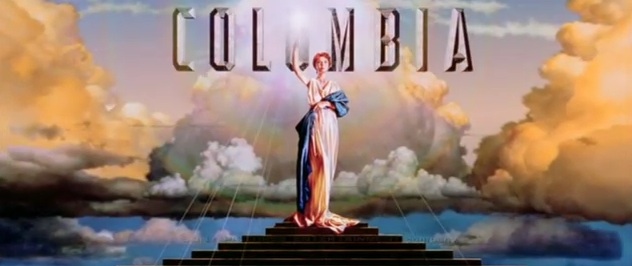The speed of editing
The speed of editing can suggest a genre of a film, for example a thriller having fast cuts to create fast paced action or a horror to create scenes to make the audience jump in fear.
Cutting a scene at the right moment could be the difference between creating suspence or having no suspence at all or creating a scene that keeps the viewer guessing.
Slow editing can create a film to become boring unless used in the correct way. For example using slow editing from a point of view shot to show a sad or confused emotion.
Thursday, 26 December 2013
Thriller Recipe
Thriller Recipe
A good thriller should contain certain aspects and techniques such as, dramatic lighting, suspense, dietetic and non dietetic sound, red herrings, cliff hangers and camera angles to suggest different things such as slow angle shot to suggest power.
A director who was good at this was Alfred Hitchcock. He was also known for the use of a Mc Guffin in most of his films which not all thrillers use but are helpful to drive a plot.
A successful thriller will have the audience gripped from the beggining right through to the end.
A good thriller should contain certain aspects and techniques such as, dramatic lighting, suspense, dietetic and non dietetic sound, red herrings, cliff hangers and camera angles to suggest different things such as slow angle shot to suggest power.
A director who was good at this was Alfred Hitchcock. He was also known for the use of a Mc Guffin in most of his films which not all thrillers use but are helpful to drive a plot.
A successful thriller will have the audience gripped from the beggining right through to the end.
Alfred Hitchcock
Alfred Hitchcock
Sir Alfred Joseph Hitchcock was born on the 13th of August 1899 and died on the 29th of April 1980 and was an English film director. He directed films such as:
Sir Alfred Joseph Hitchcock was born on the 13th of August 1899 and died on the 29th of April 1980 and was an English film director. He directed films such as:
- North by North West
- Birds
- Rebecca
- The 39 steps
He was a great well known director who knew how to include suspense, McGuffins, and cliff hangers in his films. In one of his films "North by North West he used a litteral cliff hanger. He also was good in the ways he used different camera techniques and mise end scene to suggest different things.
Monday, 16 December 2013
Studio Idents
Studio Idents
A studio Ident is what shows up before a film starts an allows the veiwer to know which production company made the film. Here are some examples:




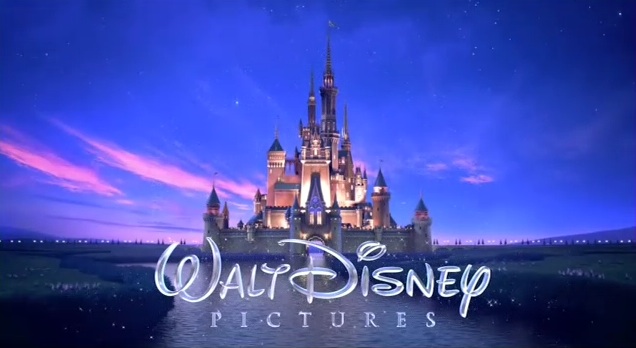

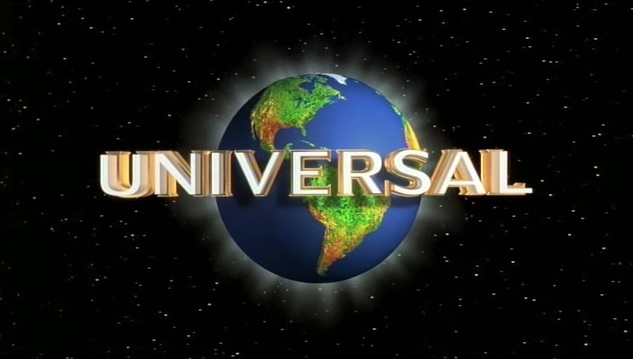
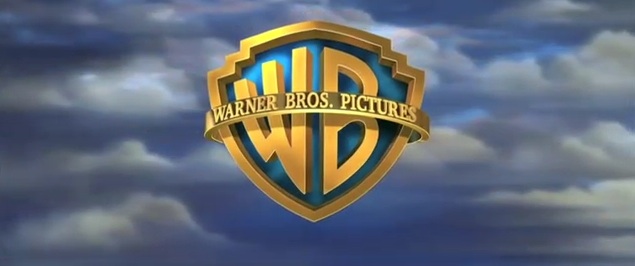

A studio Ident is what shows up before a film starts an allows the veiwer to know which production company made the film. Here are some examples:









Wednesday, 11 December 2013
Costumes and Props
Costumes and Props
|
Character Name:
|
Angela Smith
|
|
Costume:
Everyday clothing
Causual Button Shirt
Trousers
Shoes/ Trainers
|
Props:
|
|
Character Name:
|
Dr. Jeremiah Smith
|
|
Costume:
Dark, smart suit
Shirt and tie
Glasses
|
Props:
Clipboard
Notes about patient
Photo frame with picture of Dr. Smith and Rebecca
Desk
Pen
Preferably a laptop
Clock
|
|
Character Name:
|
Rupert Jones
|
|
Costume:
Scenes in therapists office:
|
Props:
Chair
Antibacterial Jel
Eye Test
|
Progress Sheet
PROGRESS
SHEET
PATIENT #: 3
PATIENT NAME: DLMSKMSL
Description:
Young Caucasian adult, recently experienced mild traumatic brain injury after
car incident, medication consistent, no reaction to diuretics or anti-seizure
drugs, prone to confusion, possible case of amnesia
*NB Former cadet, strength and
aggression gradually improving with every visit
Checklist (treatment week 4)
Experiencing
incomprehensible visions
An
increase in visions
Strength
and aggression improving
Amnesia
worsening
Taking
increased prescription
Obedience
standard improving
Risk Assessment
Risk Assessment
Group Members: Saana, Rebecca, Connor,
George
Location: School first aid room, various public locations
|
Hazard
|
Person(s) at Risk
|
Likelihood of Hazard
1 – Extremely Unlikely
5 – Extremely Likely
|
Severity of Hazard Outcomes
1 – Very Low Risk
5 – Very High Risk
|
Risk Level
(Likelihood + Severity)
2
|
Measures to Take to Manage Risk
|
Risk Managed?
Y/N
|
|
Falling into the road and getting run over by a
vehicle
|
Rebecca
George
|
1
|
3
|
2
|
Must be cautious when filming near roads and try
to choose less busy roads to film on.
|
|
|
Slipping on wet, rainy surface while running
during an action shot
|
Rebecca
George
|
2
|
1
|
1.5
|
Check the weather forecast and film outside
scenes on dry days.
|
|
|
Alley Way, dangerous objects causing a hazard may
not be seen if it is dark
|
Saana
Rebecca
Connor
George
|
1
|
1
|
1
|
Make sure there is enough lighting
|
|
|
Candle, could get knocked over and cause a fire
|
Saana
Rebecca
Connor
George
|
2
|
2
|
1
|
Extinguisher near by
|
|
Contacts
Emergency
Service:
Robert
Clack School:
Other
Contacts:
Sunday, 8 December 2013
Collateral 2004
Collateral 2004
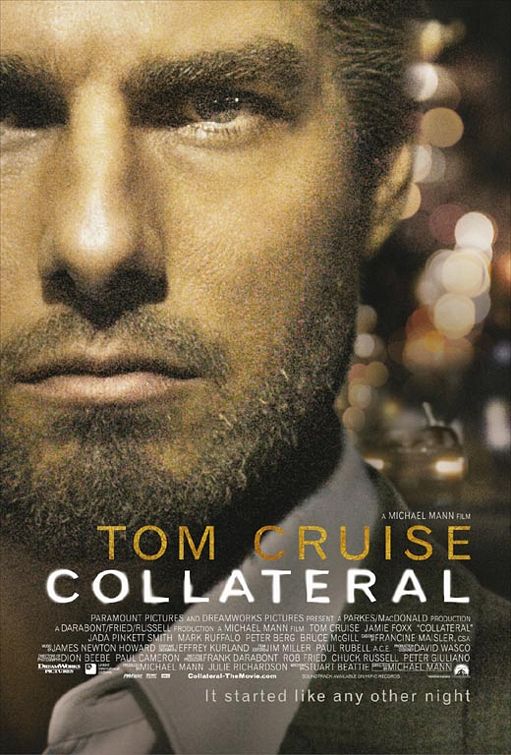
Genre: Crime Thriller
Staring: Tom Cruise and Jamie Foxx
Cast:
Mark Ruffalo
Peter Berg
Bruce McGill
Director: Michael Mann
Written by: Stuart Beattie
Collateral was Michael Mann's first film to be shot with the use of high definition cameras. In this film he used the Viper Film Stream High Definition Camera.
Collateral 2004 Trailer
The trailer is effective as it uses cuts appropriatley to fit the genre, so they are quite fast paced.
In the beginning Max Durocher (Jamie Foxx) meets a U.S Justice Department prosecutor Annie Farrel (Jada Pinkett Smith) whilst driving her to her office in his Taxi. She offers to tip him but he refuses and tells her that she should keep the money and tells her to buy herself something special. Taking a liking to Max she decides to give him her business card.
As she departs his next passanger, Vincent (Tom Cruise) enters the cab offering Max $600 for chauffering him to five appointments and waitng for him after each appointment. Max drives him to his first appointment as he waites Vincenr entees an apartment complex and shoots drug dealer Ramón Ayala. He then unexpecedly falls out of the window an directly onto the taxi which forces Vincent to reveal himself as a hitman. Max is then forced to hide the the body of guy in the trunk, clean up the car and then contine with their arrangement.
Tension is built when max plled over by the police due to the damage to the taxi from the impact of
Ramón Ayala, but luckily the police are called to a higher priority call so do nt investigate and Max and Vincent get away with a licky escape.
This clip creates tension as the audience know that there is a dead body in the boot. It creates the question if they will be caught or not. The viewer also feels sorry for the character Max as he had been dragged into driving around a guy who is commiting murders.
This clip tells us more about the character Vincent as manages to come across as completely normal even though he casually goes around murdering people.
The Russian Ark
The Russian Ark
2002 historical drama film directed by Alexander Sokurov.
The Russian Ark was filmed all in one take without the use of any cuts. It was filmed in the Winter Palace of the Russian State Hermitage Museum using a single 96 minute Steadicam sequence shot. This film demonstrates what a film without any cuts would look like and why cuts are needed to add to the pace of a film. Without cuts the film is quite slow paced in most actions and would not work for a film that is a part of a thriller genre.
No Country For Old Men 2007
No Country For Old Men 2007
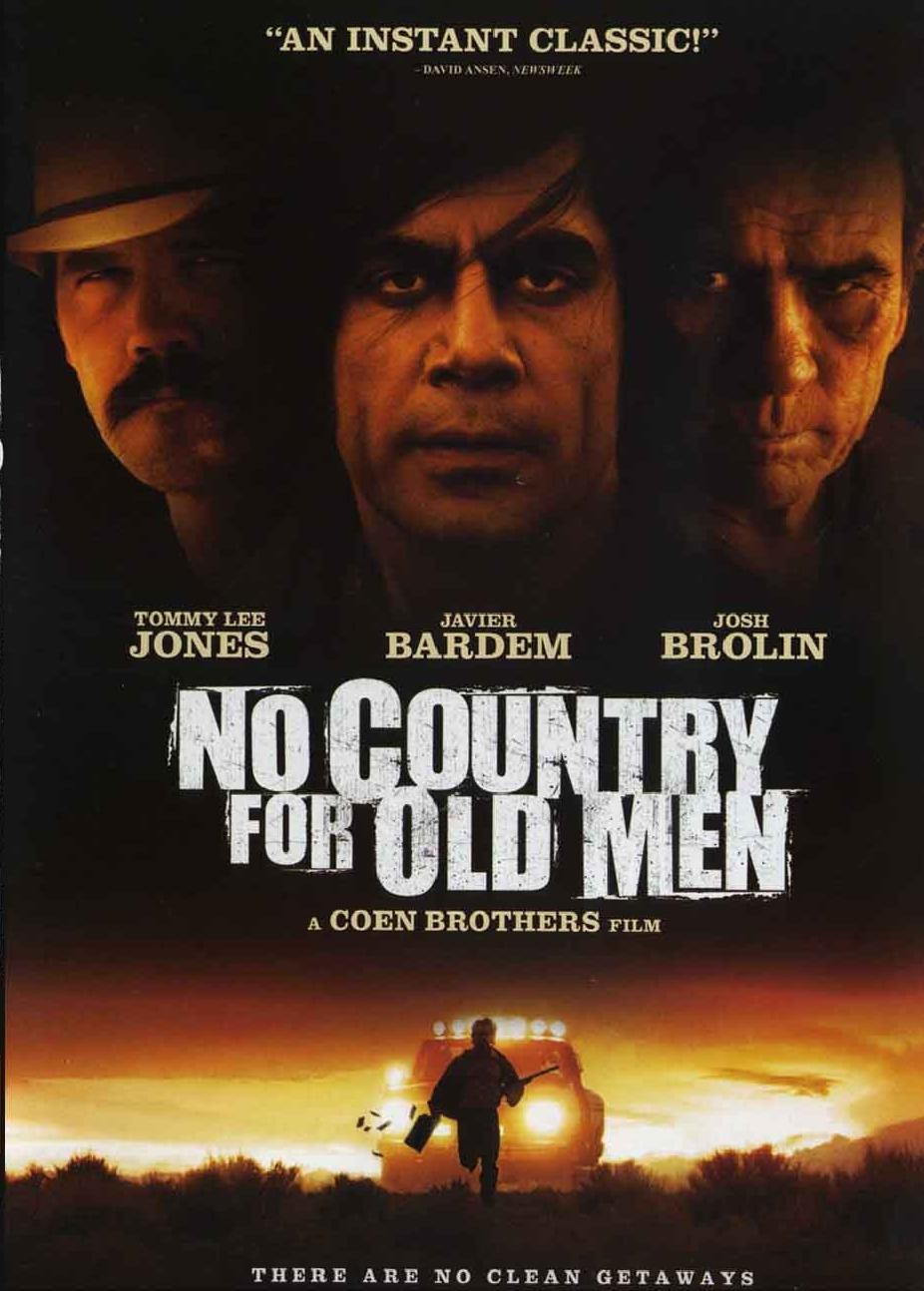
No country for old men is an american crime thriller and was adapted from Cormac Mc Carthy's novel and uses a villain driven plot.
The trailer is effective and leaves the audience in suspense by not giving away to much of what is happening but at the same time showing the audience the thrilling scenes then using cuts so that the audience ask themselves, what is going to happen next? The music used in the trailer is non-diegetic and speeds up throughout making it more intense.
Mise-en-scene suggests the film is of a western thriller genre.
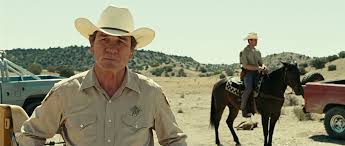
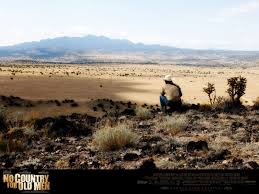
Anton Chigurh

Anton Chigurh is the villain in 'No Country For Old Men' his role is a hit-man who has no remorse or compassion for human beings therefore can kill without guilt. His expression in most of his actions are plain so you can never tell what he is thinking or feeling. In one scene he flips a coin and gets the man at the gas station to guess heads or tails to decide his fate. To kill people he uses a captive bolt pistol he also uses this to shoot out locked doors. This is a unique choice of weapon suggesting that he is different from the usual criminal.

No country for old men is an american crime thriller and was adapted from Cormac Mc Carthy's novel and uses a villain driven plot.
The trailer is effective and leaves the audience in suspense by not giving away to much of what is happening but at the same time showing the audience the thrilling scenes then using cuts so that the audience ask themselves, what is going to happen next? The music used in the trailer is non-diegetic and speeds up throughout making it more intense.
Mise-en-scene suggests the film is of a western thriller genre.
Anton Chigurh

Anton Chigurh is the villain in 'No Country For Old Men' his role is a hit-man who has no remorse or compassion for human beings therefore can kill without guilt. His expression in most of his actions are plain so you can never tell what he is thinking or feeling. In one scene he flips a coin and gets the man at the gas station to guess heads or tails to decide his fate. To kill people he uses a captive bolt pistol he also uses this to shoot out locked doors. This is a unique choice of weapon suggesting that he is different from the usual criminal.
Friday, 6 December 2013
AS Media Studies – Preliminary Exercise Evaluation
Preliminary Task
In this preliminary task we had to use continuity editing which retains a realistic chronology and shows that time is moving forwards. This type of editing can use flashbacks or flash forwards as long as the narrative, which can be liner or non linear, can be seen to be progressing is a realistic way.
In this preliminary task we had to use continuity editing which retains a realistic chronology and shows that time is moving forwards. This type of editing can use flashbacks or flash forwards as long as the narrative, which can be liner or non linear, can be seen to be progressing is a realistic way.
This was our preliminary task for AS Media Studies. We had to be able to use continuity editing for this task. Our story line was based on a package exchange between two people. We are not introduced to any of the characters in the video so they are strangers to the audience, this leaves a bit of mystery.
We managed to demonstrate elements of continuity elements in this task and stuck to the 180 degree rule.
Different types of filming techniques were used in this task such as:
- Match on action-we see a character start an action in one shot and continue it in the next
- Shot reverse shot-this is used to show conversations
- Eye line match-the character is seen looking at something off screen and then we cut to a shot of what they are looking at
- 180 degree rule-where two characters or other elements in the same scene should have the same left/right relationship to each other.
The most accurate shots would be the match on action and the eye line match as they worked well with the video when editing. They also did not have to be re-done as many times as the other shots.
Improvements could be with the way we had to cut the film as some of the footage was not as clearly done as others so more cross dissolves had to be added in. Watching the video you can see the abrupt cuts. Also the dialogue could be improved as some words did not come out as clearly as we hoped.
Wednesday, 27 November 2013
Colour
Colour
Colour works on the subconscious mind to create mood.
Over the years the used of colour in film has improved by a lot. The first use of colour was in films such as the film by the pioneer 'Voyage a Travers L'Impossible'. The film was hand painted frame by frame. Before this films did not have any colour and were simply in black and white. Once colour started to be used in films it was very overexaggerated for example in the film 'The Wizard of OZ.'

The next development of colour was the introduction of 'two-strip technicolor' using red and green. For example in the film 'The Mystery of the Wax Museum (1933)'
The technicolor system:
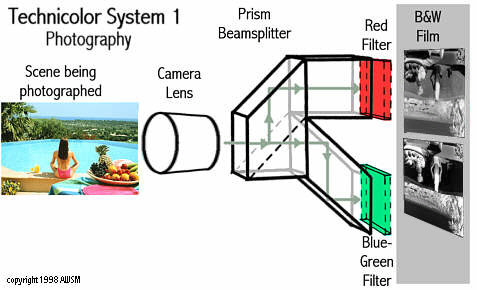
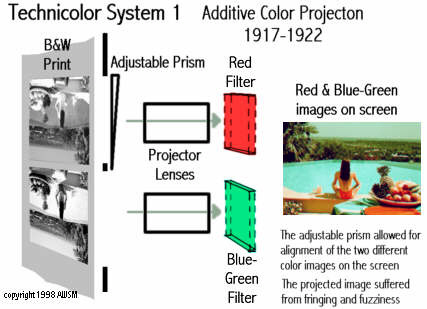
The first full three strip technicolour was 'Becky Sharp' (1935)
From the year 1930 to the year 1940 the colours black and white represented reality and colour would represent fantasy and spectacle such as in the film 'The Wizard of OZ(1939)' There is a difference between the real world and fantasy world which is shown from the dramatic change in colour and the
Colour denotation and connotation
Colour works on the subconscious mind to create mood.
Over the years the used of colour in film has improved by a lot. The first use of colour was in films such as the film by the pioneer 'Voyage a Travers L'Impossible'. The film was hand painted frame by frame. Before this films did not have any colour and were simply in black and white. Once colour started to be used in films it was very overexaggerated for example in the film 'The Wizard of OZ.'

The next development of colour was the introduction of 'two-strip technicolor' using red and green. For example in the film 'The Mystery of the Wax Museum (1933)'
The technicolor system:


The first full three strip technicolour was 'Becky Sharp' (1935)
From the year 1930 to the year 1940 the colours black and white represented reality and colour would represent fantasy and spectacle such as in the film 'The Wizard of OZ(1939)' There is a difference between the real world and fantasy world which is shown from the dramatic change in colour and the
over exaggerated colours in OZ.
Colour denotation is the literal description of an idea concept or object and colour connotation is what we associate with a particular idea, concept or object. For example the colour red denotation is a particular wavelength on the electromagnetic spectrum and the connotation would be anger, blood or danger etc.
Digetic/Non Digetcic Sounds
Non-Diegetic/Digetcic Sounds
There are different types of sounds used by the film industry. For example digetic and non-diegetic sounds. Examples of diegetic sound could be, sound effects or music from a radio and non-digetic sounds could be the soundtrack.
Digetic sounds can be edited for example if you wanted the sound of footsteps over a part of a film this could be added and then made to fade. This type of sound can create more mystery, even silence can be added to a part of a film so the viewer pays more attention.
There are different types of sounds used by the film industry. For example digetic and non-diegetic sounds. Examples of diegetic sound could be, sound effects or music from a radio and non-digetic sounds could be the soundtrack.
Digetic sounds can be edited for example if you wanted the sound of footsteps over a part of a film this could be added and then made to fade. This type of sound can create more mystery, even silence can be added to a part of a film so the viewer pays more attention.
Casino Royale opening sequence
Casino Royal
Opening to 'Casino Royal' sequence
Firstly the opening sequence is effective as we are introduced to the main charachter at the beggining of the film. There are many cuts used in the opening sequence of 'Casino Royal'. The cuts in the beggining of Casino Royale are slower as the carachters are being introduced. As the sequence progresses the cuts speed up so each scene only lasts a matter of seconds. The more cuts help the action appear more fast paced. This is a good effect to use for an action scene. Slower editing would be used in a genre such as a romance or comedy.
Different types of lighing are used in the opening sequence to show different things, very high key lighting is used in a flash back of fighing scence. The lighting used also shows the change in setting, as the scene starts of with very low key lighting. This also could suggest something about the charachter James Bond as it shows him in two different lights. Using the low key lighting could show his more dark and mischevious and in control side and the high key lighting could have been used to show him as his true self when he was being more careless with his kill.
Monday, 18 November 2013
Manchurian Candidate
Manchurian Candidate

There are two versions of "The Manchurian Candidate." They are both based on the cold war.
This version of Manchurian Candidate is in black and white. The graphics in this version are also not as good as in the version that was done in 2004 as it is a lot older. Both of them differ slightly in the way the story is told. This trailer is effective as too much is not revealed about the film. The text also goes along with the film effectively and makes the audience want to come an view it early as it says that if you turn up late you won't be able to understand what is going on.

There are two versions of "The Manchurian Candidate." They are both based on the cold war.
Manchurian Candidate 1962
Director: John Frankenheimer
Cast:
Khigh Dheigh- Dr.
Yen Lo
James Edwards
-Cpl. Allen Melvin
Douglas Henderson
-Col. Milt
Albert Paulsen -
Zilkov
Barry Kelley -
Secretary of Defense
Lloyd Corrigan -
Holborn Gaines
Robert Riordan -
Benjamin K. Arthur
Frank Sinatra -
Maj. Bennett Marco
Laurence Harvey - Raymond Shaw
Angela Lansbury - Mrs. Iselin
Angela Lansbury - Mrs. Iselin
Janet Leigh
-Eugenie Rose Chaney
James Gregory -
Sen. John Yerkes Iselin
Henry Silva -
Chunjin
Leslie Parrish -
Jocelyn Jordan
John McGiver -
Sen. Thomas Jordan
Genre: Suspense thriller
There are two
versions of "The Manchurian Candidate." They are both based on the
cold war. In this film a son of a right wing political family is brainwashed as
an unwitting assassin for an international Communist conspiracy.
Trailer 1962
This version of Manchurian Candidate is in black and white. The graphics in this version are also not as good as in the version that was done in 2004 as it is a lot older. Both of them differ slightly in the way the story is told. This trailer is effective as too much is not revealed about the film. The text also goes along with the film effectively and makes the audience want to come an view it early as it says that if you turn up late you won't be able to understand what is going on.
Manchurian
Candidate 2004
Director: Jonathan Demme
Cast:
Ted Levine -
Colonel Howard
Miguel Ferrer -
Colonel Garret
Dean Stockwell -
Mark Whiting
Charles Napier -
General Sloan
Jude Ciccolella -
David Donovan
Tom Stechschulte -
Governor Robert "Bob" Arthur
Pablo Schreiber -
PFC Eddie Ingram
Anthony Mackie-
PFC Robert Baker III
Robyn Hitchcock -
Laurent Tokar
Obba Babatundé –
Senator Wells
Zeljko Ivanek -
Vaughn Utly
David Keeley -
Agent Evan Anderson
Denzel Washington
- Major Bennett Marco
Liev Schreiber - Congressman
Raymond Prentiss Shaw (the "Manchurian candidate")
Meryl Streep -
Senator Eleanor Prentiss Shaw
Kimberly Elise -
Eugenie Rose
Jon Voight -
Senator Thomas Jordan
Vera Farmiga -
Jocelyne Jordan
Jeffrey Wright-
CPL Al Melvin
Simon McBurney –
Dr. Atticus Noyle
Bruno Ganz - Delp
Ann Dowd -
Congresswoman Beckett
Trailer 2004
The later Manchurian Candidate is set in Kuwait which makes it more appropriate and immediate for the viewing audience. The suddenness of the sound as soon as the video comes on screen creates a more dramatic effect as well as the fast Cuts leaving the audience guessing what is going to happen next and why it happened. The text used in the middle of cuts is also effective as it tells the audience that little bit more about the film by instructing them to pay more attention. For example it uses the words "look closely" and "listen carefully." The sound of the heartbeat in the background near the beginning of the trailer ads to tension during the trailer.
The big names in the film industry are also shown, such as Denzel Washington, this is a good marketing technique and will appeal more to the audience as they may want to watch the film more if a well know actor is in it.
This film seems to appeal to an older target audience but it may appeal to some younger viewers.
This film seems to appeal to an older target audience but it may appeal to some younger viewers.
This clip is quite emotional due to the graphics of the pictures shown which are upsetting, the images also tell the audience that the film has something to do with what happened during a war. The pictures are effective in the way they create emotion. Continuity editing in this clip is also effective and is done well, as it uses slow cuts any mistakes would have been more noticeable. Also as the clip progresses the cuts appear to become faster which creates a more dramatic effect, this is a good effect to use in a thriller as most thrillers use dramatic scenes.
Alfred Hitchcock is one of the best film directors/producers. He includes the conventions of a thriller in his films sucessfully. The Manchurian Candidate is sucessfull in using some of these conventions. For example, it uses suspence as the veiwer is left not knowing certain things in parts of the film. Such as what parts are dreams and what parts are reality. Other things however are left out such as the use of a red herring. The film also does not use a MacGuffin.
Overall the film was not that enjoyable and could have included more conventions of a thriller.
Monday, 11 November 2013
Lighting
Lighting
Standard Lighting Set-up
This lighting set-up uses a backlight, fill light and key light. The subject is then placed in the middle of these points.
1) Filler Light
2) Key Light
3) Backlight
Low-Key and High Key Lighting
Low-key(chiaroscuro) lighting is created by using only the back and key lights. This creates a sharp contrast of light and dark areas on the screen as deep, distinct shadows are formed. More filler lights are used to create high key lighting so that the light appears more realistic.
Low Key Lighting

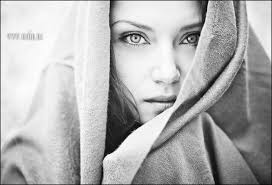
In the film Noir, low-key lighting is used to show the darker side of human nature and gives a stonger contrast between dark and light.
Standard Lighting Set-up
This lighting set-up uses a backlight, fill light and key light. The subject is then placed in the middle of these points.
1) Filler Light
2) Key Light
3) Backlight
- Key light is the brightest out of all the lights and the most influential.
- Backlight helps to counteract the effect of the key light and can create an outline or silhouette.
- Filler Light softens the harsh shadows created by the back and key lights.
Under lighting is another type of lighting. It is mostly used in the thriller/horror genre and this light source mainly comes from bellow the subject. Top Lighting is the opposite of under lighting as the main source of light comes from above highlighting features and can create a more glamorous look. Backlighting is when the main source of light comes from behind the subject. If no other lighting is used silhouettes are created.
Low-Key and High Key Lighting
Low-key(chiaroscuro) lighting is created by using only the back and key lights. This creates a sharp contrast of light and dark areas on the screen as deep, distinct shadows are formed. More filler lights are used to create high key lighting so that the light appears more realistic.
Low Key Lighting
High Key lighting
In the film Noir, low-key lighting is used to show the darker side of human nature and gives a stonger contrast between dark and light.
Use Of Camera
Use Of The Camera
Long Shot- This shot is also known as a wide shot shows more scenery
Medium Shot- shows more scenery for example buildings
Close Up- More detail can be used to show a clue
Extreme Close Up- Shows more detail
Point Of View- Shown from a persons view point
Low Angle - Can be used to show somebody with a lot of power
High Angle - Can be used to show someone powerless
Over The Shoulder - Can be used when filming conversations
Long Shot- This shot is also known as a wide shot shows more scenery
Medium Shot- shows more scenery for example buildings
Close Up- More detail can be used to show a clue
Extreme Close Up- Shows more detail
Point Of View- Shown from a persons view point
Low Angle - Can be used to show somebody with a lot of power
High Angle - Can be used to show someone powerless
Over The Shoulder - Can be used when filming conversations
Subscribe to:
Posts (Atom)

